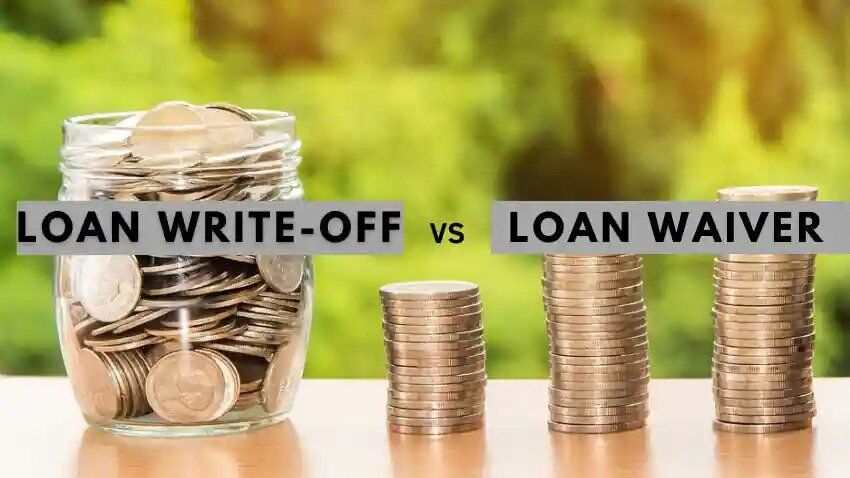It is common to use the terms ‘loan write-off’ and ‘loan waiver-off’ interchangeably. They both deal with bad loans, but their basic concepts are different, despite sounding similar. Waiving a loan is different from writing it off. Both terms apply to bad loans. What is their purpose? Non-performing assets (NPAs) are borrowers who cannot repay their loans.
There are two ways in which lenders handle NPAs or bad loans. They either dismiss them or ignore them. Lenders can balance their ledgers this way.
You will understand the difference between loan write-offs and waivers by looking at the following examples.
What is a Loan Write-Off?
If you’re not sure what a loan write-off is, you can simply describe it as the amount of loan that has been written off by the bank. Nevertheless, the bank will not limit its efforts in the future to recover the entire loan amount.
A bank writes off a bad loan primarily to use the funds allocated at the time of lending money to its borrowers to initiate more business. By writing off the loan, the balance sheet becomes more appealing to its stakeholders. Banks typically write off bad loans when their window of recovery has narrowed dramatically and they cannot recover their debt using the attached assets or arbitration.
Advantages of a Loan Write-Off
Lenders gain the following advantages from performing this activity:
- Lenders qualify for a tax rebate by writing them off.
- All borrowers do not exhaust their credit limits. As a result, they borrow the amount they need and pay interest on the actuals. Lenders are not required to release borrowers’ remaining limits when they write off loans. By doing so, they are able to release funds previously blocked for a borrower. A loan can be used for business purposes or to provide loans to others in need.
- Lenders can still recover outstanding loans after writing them off. The means necessary can be used to recover the entire or partial loan amount.
- Maintaining a clean and updated balance sheet is one of the benefits of writing off loans.
What is a Loan Waiver-off?
Loan waivers are granted when borrowers cannot repay their loans because of financial setbacks. Waivers are cancellations of all or part of a loan, which means the borrower does not have to repay the remaining balance. Usually, it is done to show goodwill, relieve the borrower of debt, or stimulate the economy. A lender may waive off all or part of a loan.
It is possible for a loan to be waived off in the event of a natural disaster, political instability, or economic recession. Through a government policy, the government may also assist groups in debt, such as farmers or students. It is rare, however, for a loan to be waived off and it usually occurs under particular circumstances.
If a borrower cannot pay back the loan due to a lack of income, the government may offer a waiver rather than a write-off.
There are certain conditions that must be met for borrowers to qualify for waivers. Since the waiver-off amount cannot be ignored, the lender cannot disregard the unrecovered loan. These waivers are recorded as loan write-offs by banks to balance their books, which allows them to recover their losses in the future. Loan waivers can benefit both borrowers and lenders. Benefits include the following:
- Provides financial relief: A loan waiver can help borrowers who are struggling to repay their loans due to unforeseen circumstances such as losing their jobs, becoming ill, or experiencing a natural disaster. Furthermore, the loan can provide much-needed relief to the borrower.
- Increases consumer spending: By waiving a loan, the borrower can spend more on goods and services, thereby increasing consumer spending. Spending by consumers can increase as a result.
- Improves credit score: The elimination of debt can increase a borrower’s credit score after the loan is waived. The borrower will have an easier time obtaining credit in the future.
- The publicity that is positive: It is possible for lenders to generate positive publicity and an improved reputation by waiving their loan obligations. Being willing to work with the borrower and assisting him or her compassionately shows the lender’s desire to help the borrower.
However, loan waivers may not be the best solution for borrowers or lenders, and they can also have disadvantages. Lenders create a moral hazard when they encourage borrowers to take on more debt with the expectation that it will be forgiven later. In the event that lenders are unable to lend in the future, they may incur losses as well. Whenever such circumstances exist, it is important to carefully consider and implement loan waivers. A loan write-off is an act of declaring a loan uncollectible, which means the lender writes off the debt as a loss. A loan waiver, on the other hand, relieves a borrower of their obligation to repay the loan. Lenders forgive debts when they agree to do so, and borrowers are no longer responsible for repaying them. In both cases, your credit score is compromised.
FAQs on Loan Waive Vs. Write off
1. Can banks take legal action when a loan is waived-off?
Ans: The bank cannot take legal action against the borrower to recover the amount when a loan is waived. In the event of a waive-off, the bank will return ownership papers to the borrower if any kind of collateral has been provided.
2. After being written off, is it possible to get a loan?
Ans: After debt settlement, lenders may be reluctant to offer you unsecured loans because you were unable to pay your previous dues. You may, however, be able to secure a loan by pledging an asset as security.
3. Is it possible to remove the written-off status from the CIBILTM report?
Ans: An individual must completely clear their existing debts to remove the ‘write off’ status from their CIBILTM report. For borrowers who cannot pay off the entire debt, settlement dues can be agreed upon between the lender and the borrower.



